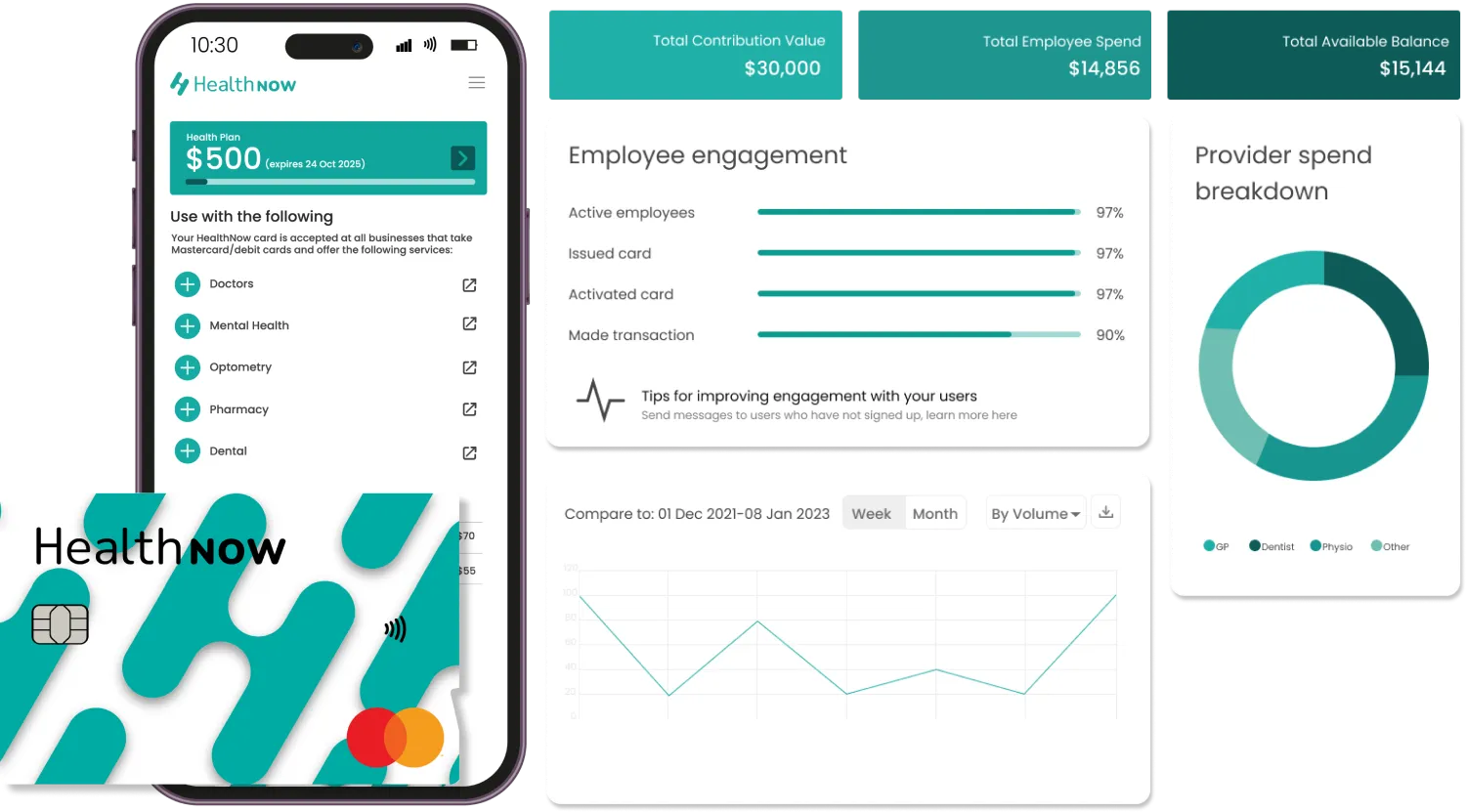Strokes can have serious effects on a person’s life and their mobility. In New Zealand, one person suffers from a stroke every 55 minutes – so knowing how to identify strokes, recover, and manage the effects is very important. Interestingly, while strokes used to be associated with older adults, strokes are growing in prevalence in adults aged between 18 and 55 years.
When it comes to recovering from a stroke and regaining mobility and function, a physiotherapist is an important person on your rehab team who works closely with you to optimise your function and independence. Here’s a closer look at what strokes are, how they can affect you, how you can spot one, and how you can access physiotherapy care without the upfront cost.
What Is A Stroke?
When blood flow to a part of the brain is interrupted, this is known as a stroke. Normally, blood carries oxygen to your brain to enable it to function properly, so when anything disrupts the oxygen levels in the brain, brain cells can become damaged, and areas of the brain stop working as they usually would.
Different portions of our brains are responsible for controlling different functions including movement, senses, emotions and thoughts, so the effects of a stroke will depend on which part of the brain has been damaged and how severe this damage is. This means that a stroke may affect your ability to walk, talk, eat, see, read, perceive temperature, or do things you were able to do easily before the stroke.
The three types of strokes include haemorrhagic strokes (where a blood vessel bursts and leaks blood into the brain), an ischemic stroke (from a blood clot in the vessels in the brain blocks blood flow), or an embolic stroke, where a blood clot travels from another part of the body to the brain, forming a blockage.
Recognising A Stroke
Before rehab even starts, one of the best ways to help someone suffering from a stroke is to be able to recognise the signs so you can get help urgently. The Australian Stroke Foundation has an acronym to help – FAST:
- Face: Check their face. Has their mouth drooped?
- Arms: Can they lift both arms?
- Speech: Is their speech slurred? Do they understand you?
- Time Is critical. If you see any of these signs, you must call for help by phoning 000 straight away.
How Does A Stroke Affect You?
Each person will be affected in unique ways by a stroke, depending on which parts of your brain have been damaged, and how severe the damage is. The effects can be mild to severe, and some people recover quickly, while others have more ongoing challenges. If the stroke only occurred in one half of the brain, one side of the body is often more affected than the other.
Research has found that 73% of people recovering from a stroke experience at least one fall within the first six months of recovery, take half as many steps as the general population, and have longer periods of sedentary behaviour in their day.-6 The effects of a stroke can also include:
- Paralysis, muscle weakness, or heaviness, usually on the affected side of the body
- Numbness in the hands, feet, arms or legs
- Difficulty speaking and closing the mouth fully
- Difficulty swallowing and drinking
- An uneven facial appearance due to the loss of muscle function on one side
- Difficulty lifting, standing or picking up objects due to muscle weakness
- When one side of the body is weaker, the other side often compensates by becoming stronger and more dominant, causing difficulties with balance and coordination
Physiotherapy For Strokes
Physiotherapy is an integral part of stroke recovery – physiotherapy can help facilitate movement and exercises that help the brain reorganise or rewire cell functions to new, healthy areas of the brain. This ability of the brain to form new neural connections and pathways is known as neuroplasticity. Physiotherapy can help patients who have experienced a stroke gain new skills, while improving and re-obtaining skills they had before. Immediately following a stroke, some areas of the brain do recover on their own, and after that, changes and improvements are due to neuroplasticity which is facilitated through physiotherapy.
Thankfully, neuroplasticity has no time limit. Historically, some doctors believed that recovery time after a stroke was limited, but studies have now found that just 2-12 weeks of physiotherapy can create long-lasting improvements in people who experienced strokes many years ago., This includes improving walking speed and distance, or better coordination in an affected hand.
Currently, the recommendations for preventing a second stroke, and reducing stroke complications, include at least 30 minutes of daily aerobic exercise, but it can be very difficult for a person who has suffered a stroke to reap the benefits from aerobic exercise as they don’t often have sufficient muscle strength to raise their heart rate, and loss of balance and coordination can also make exercising difficult. This means that regaining strength and endurance for exercise becomes a key factor that physiotherapists focus on.
As well as this, physiotherapists work on helping you achieve the independence to do everyday tasks that are important and enjoyable for you. Beyond the early stages of physiotherapy, which may concentrate on basics such as sitting up from a lying position, guiding the movement of a limb, and practising standing, your individual goals may include getting dressed, showering, preparing meals and going for walks, as well as attending work, participating in sports or leisure activities, or driving a car. In relearning these tasks, researchers have found five key principles that physiotherapists use to successfully increase the potential for neuroplasticity and recovery after a stroke. These include:
- Use it or lose it: Studies show that the brain can regain control of an area that was previously lost, which means it’s important to use your affected arm and leg, and do tasks that involve both hands and legs.
- Use it and improve it: Once you’ve used your affected arm or leg and made improvements, make the task harder to continue to challenge yourself.
- Specificity: Focus on a specific task. Simply opening and closing your hand is not very specific, but reaching to grasp a mug or trying to play the keys on the piano will create better results.
- Repetition: Practice, practice, practice
- Make it meaningful: Movements need to be relevant to you. If the goal is to reach and grip with your hand, try to pick up a bridle if you’re a horse rider. If you enjoy gardening, practice picking up a garden fork, and if putting on makeup is important to you, practice reaching for your foundation.
Access Physiotherapy For Stroke Rehab Without The Upfront Cost With HealthNow
HealthNow is enabling stroke sufferers to get the care and rehabilitation they need at a fraction of the upfront cost on the day of their physio appointment. HealthNow is the world’s first Buy Now Pay Later (BNPL) platform that is entirely dedicated to making healthcare accessible and affordable, meeting higher regulatory compliance to ensure it operates with social responsibility. It also has greater user benefits – like remaining completely free for you to use as a health consumer with no fees, sign-up costs or any hidden expenses.
Simply book your physio appointment with a HealthNow-affiliated physio clinic, and when it comes to pay for your appointment, simply use the app on your smartphone to decide how many weeks you’d like to spread the cost over, up to twelve weeks. Your physio will get paid in full on the day of your visit, while you only pay a fraction of the cost upfront. You can also use HealthNow to purchase any rehab equipment from your physio – and much more.
HealthNow also has a specifically-designed health wallet to help you save money safely to cover the costs of any medical or health-related appointments, services and products. This is a fantastic option for those wanting to best prepare for future unexpected health events. You choose the amount and frequency that you’d like to contribute – and others can also contribute to your health wallet, from family members who want to help you look after your health, to employers as part of employee wellness programs. Once the money is in your wallet, it’s yours in full to spend any time on any health-related cost with HealthNow. It can also be used for your family members or loved ones.
Get Started With HealthNow Today
Getting started with HealthNow is free and easy. Download the app and follow the instructions. You can also check out HealthNow’s full benefits and features, and see how it can make a big change in your stroke recovery.







